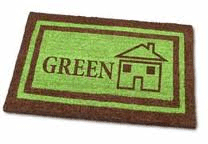Making Progress in Montpelier
by Richard Fe asy
asy
What would you think about having a system in place so that every time a home or business was listed for sale in Vermont, buyers would be provided with an energy rating and information on improving the energy efficiency of that building?
Might you consider this a step in the right direction by making sure buyers were made aware of what they were getting into and given guidance on reducing energy costs? Or would you see this as an excessive mandate?
 These seem to be the two extreme perspectives voiced at the Working Group on Building Energy Disclosure that has been meeting regularly since late summer in Montpelier. This Working Group was established as part of H.47, the “Vermont Energy Act of 2011”, to study “…whether and how to require disclosure of the energy efficiency of commercial and residential buildings in order to make data on building energy performance visible in the marketplace for real property and inform the choice of those who may purchase or rent such property.”
These seem to be the two extreme perspectives voiced at the Working Group on Building Energy Disclosure that has been meeting regularly since late summer in Montpelier. This Working Group was established as part of H.47, the “Vermont Energy Act of 2011”, to study “…whether and how to require disclosure of the energy efficiency of commercial and residential buildings in order to make data on building energy performance visible in the marketplace for real property and inform the choice of those who may purchase or rent such property.”
The Act named the composition of the Working Group to include: legislators, certain agency heads (or their designees), a real estate broker, someone from Efficiency Vermont, an appraiser representative, a builder representative, a contractor, an energy rating provider, an energy expert, a local energy committee representative, a lender representative, an attorney, and a heating service representative. The individuals making up this diverse group bring a wealth of experience and perspectives to the table, and Working Group co-chairs Rep. Margaret Cheney and George Twigg (Efficiency Vermont) provide a fair and balanced approach in making sure that all opinions are aired and heard.
The Working Group has met three times through October 2011, and the three subcommittees that have been formed out of the main Working Group have been meeting multiple times in addition to the full Group meetings. Focusing on “disclosure recipients and timing”, “markets and properties”, and “rating and audits”, these sub-groups have researched and discussed many of the details that will be necessary to consider if energy disclosure policy is to proceed. The Working Group has been asked to provide a report and recommendations to the general assembly by December 15, 2011. The elements of this report are just now starting to emerge.
From an initial “sense of the group” vote taken at the meeting in late October, there appears to be a majority of support for recommending a system that would require a simplified energy rating produced by the seller, their real estate agent, home inspector or other trained contractor at about the time a building is put on the market for sale, prior to the first showing. There exist such web-based rating systems that could be made available for as inexpensively as free that appear to work quite well. Buyers could then compare properties with the energy rating information in hand and have some sense of what they could be getting into and what it might take to upgrade that building to more efficient levels. The Working Group is also looking into recommending a system that would then connect the buyer of a property with a certified building performance contractor who could provide a more detailed and specific energy audit that could be used as part of financing to upgrade the building. Linking the buyer to actionable information is ultimately the intent of this disclosure initiative, since the objective is for Vermont to improve the energy efficiency of 80,000 buildings 25% by 2020, the goal set out a few years ago by the Vermont legislature.
In an on-going spirit of cooperation, the Working Group will continue to work towards their December 15 report goal. The meetings are all open to the general public, so if you are interested in attending or receiving more information, you can contact Rachel Levin at rlevin@leg.state.vt.us.








Leave a Reply